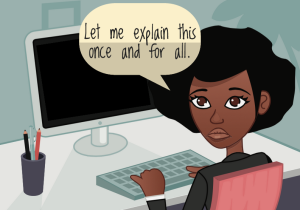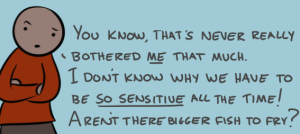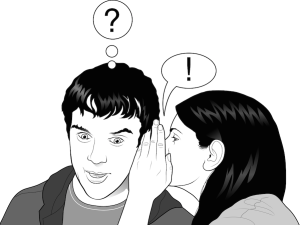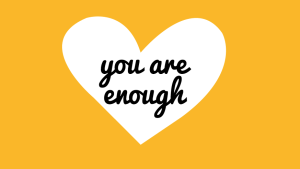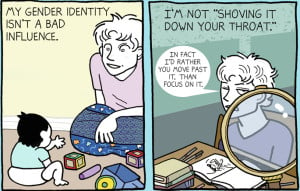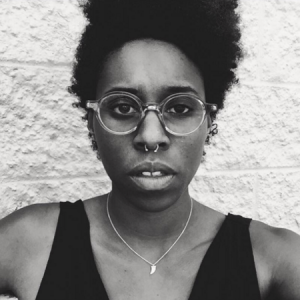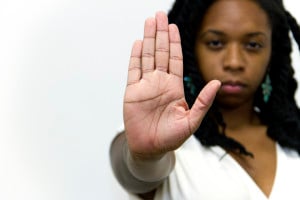So, you just walked into a Halloween party. You think you’re wearing a kick-ass costume, but instead of giving you a compliment, someone tells you that your costume counts as cultural appropriation.
And you think that’s a ridiculous accusation. You? Doing something racist?
You didn’t have hateful intentions, so you don’t know how you could have a negative impact. Plus, nobody likes being told that they “can’t” do something, and you feel like this person’s saying you can’t wear your costume – even if you don’t mean to hurt anyone.
So if you’re wondering what the big deal is about cultural appropriation, I’ve got you covered.
Read on for some perspective on why people might get upset if you borrow from another culture.
What Cultural Appropriation Is (And Isn’t)
In short: Cultural appropriation is when somebody adopts aspects of a culture that’s not their own.
But that’s only the most basic definition.
A deeper understanding of cultural appropriation also refers to a particular power dynamic in which members of a dominant culture take elements from a culture of people who have been systematically oppressed by that dominant group.
That’s why cultural appropriation is not the same as cultural exchange, when people share mutually with each other – because cultural exchange lacks that systemic power dynamic.
It’s also not the same as assimilation, when marginalized people adopt elements of the dominant culture in order to survive conditions that make life more of a struggle if they don’t.
Some say, for instance, that non-Western people who wear jeans and Indigenous people who speak English are taking from dominant cultures, too.
But marginalized groups don’t have the power to decide if they’d prefer to stick with their customs or try on the dominant culture’s traditions just for fun.
When the last living survivors of massacred Indigenous tribes are fighting to save their language before it dies when they do, and Native students are suspended for speaking in their own Indigenous languages, mirroring the abusive US boarding schools that tried to wipe out Native American cultures up until the 1980s, it’s clear that not every person who speaks English does so by choice.
In other words, context matters.
Which means it’s not about saying that you, as an individual, are a bad person if you appropriate someone else’s culture.
It’s a complicated issue that includes our histories, our current state of affairs, and our future, as we act to eliminate oppression, instead of perpetuating it.
So if you’re still baffled about why people would get upset about this issue, consider the following contexts.
1. It Trivializes Violent Historical Oppression
To you, it can feel like a big deal to have to give up something you’ve borrowed from another culture and incorporated into your life, especially if it’s meaningful to you in some way.
For example, owners and fans of the NFL team the Washington Redsk*ns have largely come to the defense of the name, pulling out every reason including “honoring Indians,” “keeping to tradition,” and “you’re being too sensitive,” in reaction to Indigenous activists calling for the end of Indian mascots.
The fans and the NFL are emotionally and financially invested in the name and don’t want to take extra time and money to change it. And that makes sense.
But consider this: When violence systematically targets a group of people through genocide, slavery, or colonization, the resulting trauma lasts through generations.
So here’s what’s at stake for the Native people: The term “redsk*n” comes from the time when the colonial and state governments and companies paid white people to kill Native Americans and used their scalps or even genitalia (to prove their sex), aka “red skins,” as proof of their “Indian kill.”
Given that history, is it a surprise that so many Native people are angry about football fans who think they’re “honoring” Native people with this mascot and their excuses?
We should be ashamed of this time in our history – and we should be working to heal the damage from it.
But instead, the NFL (and other sports teams) insist on celebrating the genocide of a people for fun and profit.
2. It Lets People Show Love for the Culture, But Remain Prejudiced Against Its People
White people don’t ask to be born with privilege, but what they choose to do with it is another story.
In the San Francisco Bay Area, I witness people taking what they like without wanting to associate with where it came from all the time.
Here, recent transplants to the area write Yelp reviews in search of “authentic Mexican food” without the “sketchy neighborhoods” – which usually happen to be what they call neighborhoods with higher numbers of people of color.
The Yelpers are getting what they want, at least in terms of the neighborhood, as gentrification rapidly pushes people of color out of their homes, and white-owned, foodie-friendly versions of their favorite “ethnic” restaurants open up.
That’s how it goes with cultural appropriation: not sharing so there’s more for everyone, but taking advantage of the power imbalance between groups to have more for well-off white people, and less and less for poor people of color.
And this can happen because we live in a world in which racist white people can essentially say “We want your stuff, but we don’t like you” by taking people’s traditions while being biased against who they are as a person.
Cultural appropriation shows that you don’t have to like a person or respect their identity to feel entitled to take from them.
So is every non-Mexican who enjoys a good burrito guilty of cultural appropriation? Say it ain’t so! That would include me and nearly everyone I know.
But now that you know that popularizing “ethnic” food can be one way to harm a group of people while taking from their traditions, you can think about ways to satisfy your international food cravings without participating in that harm.
3. It Makes Things ‘Cool’ for White People – But ‘Too Ethnic’ for People of Color
The US is a white-dominated society, and for proof of that, search no further than the way immigrants, Indigenous people, and people of color are criticized for the things that distinguish us from white Americans.
For example, standards of professionalism hold back all kinds of people who aren’t white men. As a Black woman, there are many jobs that would bar me if I wore cornrows, dreadlocks, or an afro – some of the most natural ways to keep up my hair.
So for me, wearing my hair naturally is a meaningful declaration that I believe in my natural beauty. It’s risky to make this declaration in a society that says I must aspire to whiteness have value.
Compare that to fashion magazines’ reception of white teenager Kylie Jenner’s “epic” cornrows or “edgy” dreadlocks.
When Black women have to fight for acceptance with the same styles a young white woman can be admired for, what message does that send to Black women and girls?
It says that our natural beauty isn’t beautiful at all – and that our features are only appealing when they’re adopted by white women.
4. It Lets Privileged People Profit from Oppressed People’s Labor
Supposedly, in the good ol’ US of A, we’re all free to pursue the capitalistic American dream of building our own wealth.
But in reality, it’s not that simple.
For many people, barriers like classism, racism, and xenophobia mean they don’t have the right look, language, or position of privilege to earn income with their culturally specific tools – and yet oftentimes, white people can turn those same culturally specific tools into profit, thereby hurting the community they’re borrowing from.
So, for example, say a middle-class white woman gets into Native American spirituality, and sees the chance to start a business based on what she’s learned. That might seem innocent enough. She has an interest, and she wants to make money off of it. That’s the dream, right?
But the problem is that in order to sell her products, she has to participate in a discriminatory system. This system includes federal government policies that make it hard for Native people to start their own businesses, as well as a professional culture in which white women and middle class women can fit more easily than poor Native women.
So while she profits, the Native women she adopted her products from live in deep cycles of poverty and unemployment.
So white women dominate the industry of New Age materials with watered down versions of Indian spirituality practices, drowning out the Native voices speaking up about what Native communities need to survive.
In her fantastic essay “For All Those Who Were Indian in a Former Life,” Andrea Smith breaks down how all this plays out when white feminists claim Indian spirituality and “want to become Indian without holding themselves accountable to Indian communities.”
Someone with white privilege and class privilege has other options for earning income, so they don’t have to resort to profiting from someone else’s labor or culture. And the risks involved for marginalized people show that it’s more ethical to pursue another path.
5. It Lets Some People Get Rewarded for Things the Creators Never Got Credit For
Who comes to mind when you think of rock and roll?
Is it a white person?
Who do you think started rock and roll? Is it Elvis Presley, the so-called “King of Rock and Roll?”
Surprise! Rock and roll came out of the blues and was initially largely shaped by Black artists. The problem was that in the 1950s, racist white people were clear that they didn’t want to support a Black artist. So guess what they did.
The record industry found success with popular white stars who molded a mainstream look and sound after Black artists their racist white audiences would never support. Sam Phillips, the record executive who discovered Elvis, summed it up when he apparently said, “If I could find a white man who had the Negro sound and the Negro feel, I could make a billion dollars.”
And while Elvis never claimed to have started it (and was clear about the Black artists who influenced him), our media has rewritten history to claim that Elvis invented rock and roll. And now it’s hard to think of rock and roll ever having been music that came from the Black community. Have you ever even heard of Sister Rosetta Tharpe?
This tradition of “borrowing” from Black artists and promoting white artists over more talented Black artists continues to make the record industry billions today.
When Iggy Azalea gains fame and fortune through Blackface imitation, Black folks and hip-hop fans rightfully get upset. When Macklemore won four Grammy Awards, even Macklemore‘s confused and thinks Kendrick Lamar should have won the Best Rap Album.
Scan the nominations for many major award shows for an idea of how much whiteness represents greatness in the US’s cultural consciousness. Then rethink the myth that the people who make it are successful because they’re the hardest workers.
6. It Spreads Mass Lies About Marginalized Cultures
People say that sharing between cultures is supposed to help us learn, but cultural appropriation is teaching us all the wrong lessons.
Oftentimes, our most common reference to something atrocious totally misrepresents the truth, making us think it’s all in good fun.
For instance, if you think about the real story of Pocahontas, having your daughter pretend to be her on Halloween is pretty disturbing. The real Pocahontas, whose given name was Matoaka, was abducted as a teenager, forced to marry an Englishman (not John Smith, by the way), and used as propaganda for racist practices before she died at the age of 21.
And it almost feels like that propaganda never ended, as our popular lessons on what happened between colonizing settlers and Indigenous people depict Native people as savages, or as happy, mystical characters, or as entirely absent.
We don’t hear the real stories, and most of us don’t live with a direct connection to their suffering.
Does the truth matter, when it comes to a little girl just trying to enjoy a holiday? You might think it does if she wanted to dress up as someone whose tragic truth is more familiar, like Anne Frank.
They’re both girls with harrowing stories. But more of us believe that trivializing Anne Frank’s life is in very poor taste. Can you imagine the outcry if Disney tried to romanticize her diary by aging her into a young woman with a love affair with a Nazi officer and a happy ending?
Now imagine if that Disney movie was mainstream culture’s primary reference for the Holocaust. And if it was marketed to Germans, who were told that the historical figures who oppressed the Jewish people were their country’s heroes.
Creepy, right?
How can so many of us be so undisturbed by some victims’ stories that we can turn them into costumes?
That shows privilege – and a huge failure of our educational system. We shouldn’t dismiss injustice to act on that privilege.
7. It Perpetuates Racist Stereotypes
As Dr. Adrienne Keene of Native Appropriations puts it, “You are pretending to be a race that you are not, and are drawing upon stereotypes to do so.”
Katy Perry, for example, said that her performance as a geisha during the 2013 American Music Awards was an homage to Japanese culture. But she completely misrepresented what she claimed to be honoring – and used a huge platform to perpetuate negative, all-too-common stereotypes about Asian women.
With her single “Unconditionally,” Perry sang about undying love while playing up the image of a passive, submissive sexual object of an Asian woman.
For her, it was just a character – but this stereotypical image has real consequences for Asian women in the US. Their experiences with dating, racialized sexual harassment, and fethishization reveal that white men actually expect Asian women to live up to the “exotic geisha girl” stereotype of being sexually submissive and docile.
Lauren Smash described her experiences in “Yellow Fever: Dating As an Asian Woman” like this: “It is dehumanizing at best to constantly be compared to a stereotype and to have people chasing you not as a person, but as an embodiment of the stereotypes that they use to define you.”
At the end of the day, Katy Perry got to take the costume off and return to the millions of dollars it helped make her and to the people who see her as a dynamic human being, and not just a demure caricature.
Asian women, on the other hand, have to deal with the racist and sexist social norms that Perry helped perpetuate, which is what happens when the only mainstream image of your sexuality is a negative stereotype reinforced constantly by cultural appropriation.
It’s certainly not harmless or respectful to misrepresent people’s culture and spread the toxic myths that harm them.
8. White People Can Freely Do What People of Color Were Actively Punished for Doing
It can feel like a slap in the face to see carefree white people enjoy the practices your ancestors were penalized for.
It’s also an unsettling reminder that the process of taking our practices from us isn’t over, as white folks end up having more access to our practices than we do.
The sweeping trend of yoga in the US is an example of this.
Did you know yoga was once banned in India as part of the “racist and orientalist narratives” that characterized Indian people as perverse heathens who had to conform to Western ways? The bands of yogis who resisted the ban rose up to challenge the oppressive British rule.
These days, it seems like yoga’s everywhere, and practitioners don’t have to challenge the rules of the government to reach it. It can bring up some sensitive feelings to say that non-South Asian people who do yoga are appropriating culture, because the practice benefits many people throughout the US.
But you know who’s not benefiting from the commercialization of yoga like middle class white women are? The South Asian people for whom yoga has a deep cultural and religious significance.
A touching moment in this discussion with South Asian yoga teachers from South Asian Art & Perspectives on Yoga and America (SAAPYA) shows one woman’s tearful explanation of how the elders in her community don’t have access to the yoga studios dominating the industry of a practice so important to them.
As Susanna Barkataki writes, dividing yoga from its true roots and purpose, and from the people who had to fought to keep it alive, means “eventually eradicating the true practice, as was accomplished in many places under Britain’s occupation of India.”
There’s a reason the British used attacks on yoga as a tool for oppressing an entire country of people. Removing a culturally significant source of wellness and spirituality is one way to rip apart critical connections that help people survive.
That’s what the commercialization of yoga is doing to South Asian people today – increasing white people’s access, while continuing to take it away from people who had to fight to keep it alive in the first place.
Barkataki also says that this doesn’t mean white people can’t practice yoga.
But if you’re doing it in a way that contributes to excluding Indian people from it, prioritizing white practitioners’ desires over South Asian people’s needs, or making white people the image of yoga, you’re part of the problem.
9. It Prioritizes the Feelings of Privileged People Over Justice for Marginalized People
One of the main objections to avoiding cultural appropriation comes down to “free speech.”
You should have the right to express yourself however you want to – and you do. Nobody can force you to stop taking things from other cultures. The marginalized people whose cultures are appropriated don’t have the institutional power to force you to stop, even if they wanted to.
But claiming that the dominant culture has a right to take freely from disempowered groups sounds a lot like the lie of the “white man’s burden” from the past. Colonizers used this concept to claim they had a “duty” to take land, resources, and identity from Indigenous people – trying to justify everything from slavery to genocide.
We have a lot of work to do to heal from the impact of oppression from the past through present day. Many examples of cultural appropriation may seem like not a big deal, or like we should have “more important” things to worry about.
But changing oppressive everyday norms is a huge part of the work. It’s one of the ways we can help stop the way society dehumanizes, erases, and ostracizes people of color.
If the choice is between your freedom to wear a costume because it could be fun, or an ethnic group’s ability to maintain the sacredness of a tradition that helps them resist harm, it’s clear that skipping the costume puts you on the side of anti-oppression.
And, hint: That’s the side you want to be on.
***
I’m not saying you automatically can’t enjoy Mexican food if you’re not Mexican, or do a yoga-inspired practice if you’re not Indian, or use any other culturally specific practice in the US.
But I am encouraging you to be thoughtful about using things from other cultures, to consider the context, and learn about the best practices to show respect.
Maybe you’ve worn a costume you didn’t know had a violent history, or you had the intention of honoring a culture in a way you didn’t realize was offensive. Or you learned about these oppressive histories, but you’re just now realizing that what you learned wasn’t even close to the entire truth.
So now, what’s your next step in incorporating this information into your anti-racist work?
Challenging stereotypes? Calling out appropriation when you see it? Spreading the word about the dire need to change the inaccurate way we learn about oppressed people’s struggles?
At the very least, you know you have alternatives to disrespecting cultures that aren’t your own.
Don’t keep making other cultures invisible under our society’s “melting pot” ambitions. Make room for all of us to thrive by having fun without oppression.
[do_widget id=’text-101′]
Maisha Z. Johnson is the Digital Content Associate and Staff Writer of Everyday Feminism. You can find her writing at the intersections and shamelessly indulging in her obsession with pop culture around the web. Maisha’s past work includes Community United Against Violence (CUAV), the nation’s oldest LGBTQ anti-violence organization, and Fired Up!, a program of California Coalition for Women Prisoners. Through her own project, Inkblot Arts, Maisha taps into the creative arts and digital media to amplify the voices of those often silenced. Like her on Facebook or follow her on Twitter @mzjwords.
Search our 3000+ articles!
Read our articles about:
Our online racial justice training
Used by hundreds of universities, non-profits, and businesses.
Click to learn more


